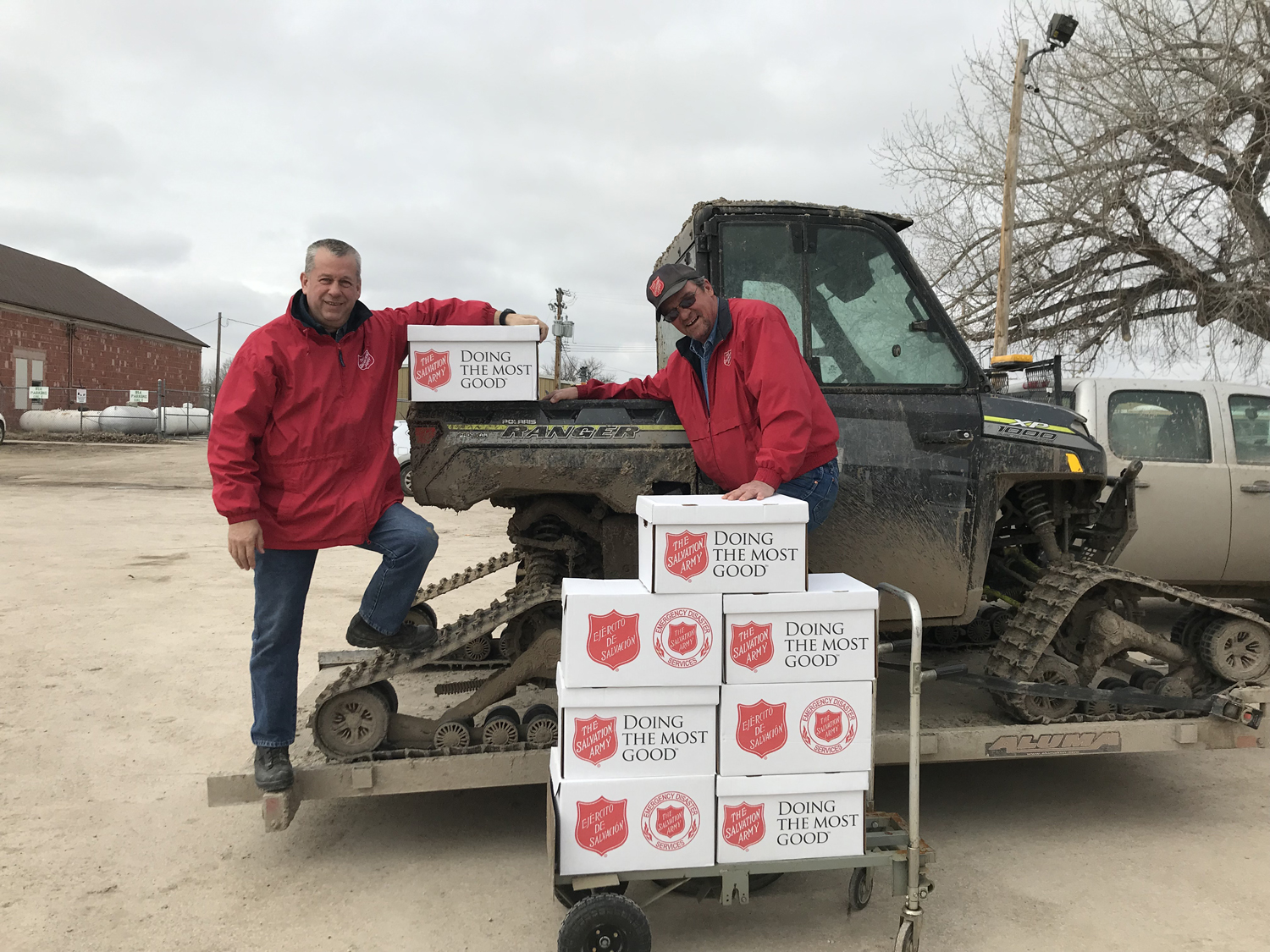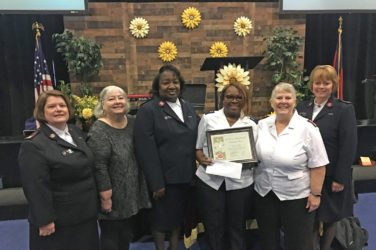Western Division transitions to long-term flood recovery operations
by Michelle DeRusha
“We had no time to grab our belongings, no warning,” recalled Tiffany Michel of Pacific Junction, Iowa. “The water just came up and destroyed our home.”
That was the experience of thousands of Midwesterners affected by catastrophic flooding this spring along a 400-mile corridor flanking the Missouri River and its tributaries. The historic flooding impacted a three-state region and caused more than $3 billion in losses.
“This is believed to be the single largest disaster response in Western Division history,” said Western Divisional Commander Major Greg Thompson. “It was an unprecedented collaborative effort from hundreds of officers, staff and volunteers from corps across Nebraska, South Dakota, Iowa and the greater Midwest, all of whom came together with one focus: to serve, support and help the survivors of these devastating floods.”
All told, The Salvation Army provided more than 40,000 meals, 48,000 beverages and 41,000 snacks. More than 72,000 flood clean-up kits and other supplies were distributed, and nearly 22,000 volunteer hours were clocked.
As floodwaters receded and survivors began to focus on clean-up and rebuilding, The Salvation Army transitioned from disaster response to longterm recovery. While Disaster Resource Centers (DRCs) in Norfolk, Omaha and Bellevue, Neb., and Council Bluffs and Sioux City, Iowa, continued to provide residents of particularly hard-hit areas with food, water and clean-up supplies, corps officers and case managers began to meet one-on-one with individuals and families to assess their long-term needs and to provide emotional and spiritual care.
Major Donna Miller and her team from the Council Bluffs, Iowa, Corps are serving four counties in Iowa. As of mid-May, more than eight weeks after the initial flooding, hundreds of families were still displaced. The canteen crew provided lunch daily to 150 people in Hamburg, Iowa, and Major Donna visited displaced flood survivors temporarily living at a campground in Waubonsie State Park near Sidney, Iowa, to offer emotional and spiritual care.
“We brought toiletries and personal hygiene supplies, but we were mostly there for conversation and consultation,” she said. “This disaster has had an enormous impact, and for a lot of people there is still a lot of uncertainty and frustration. We want to be a listening ear for them, right there where they are.”
At the Norfolk, Neb., Corps, Captain Jesus and Major Kelli Trejo’s long-term recovery plan includes support to nearly a dozen surrounding towns. In addition to providing material assistance and case management at the corps, they’ve made numerous personal visits to residents in their homes to assess individual needs and provide emotional and spiritual care.
In northwest Iowa, Captains Chris and April Rutledge-Clarke are focusing long-term recovery efforts on Sioux City, Hornick, South Sioux City and Dakota Dunes.
“We distributed more than $11,000 in financial assistance in one night,” said Captain April about their outreach work in Hornick (see story above). Most of Hornick’s residents don’t have flood insurance, and many were not eligible for federal assistance. The $500 grants provided by The Salvation Army help flood survivors pay utility bills, make mortgage and rent payments, purchase building materials and refill prescription medications.
“We’ll be here for as long as it takes,” said Captain April. “We came in as The Salvation Army, but when we leave, it will be as family.”





